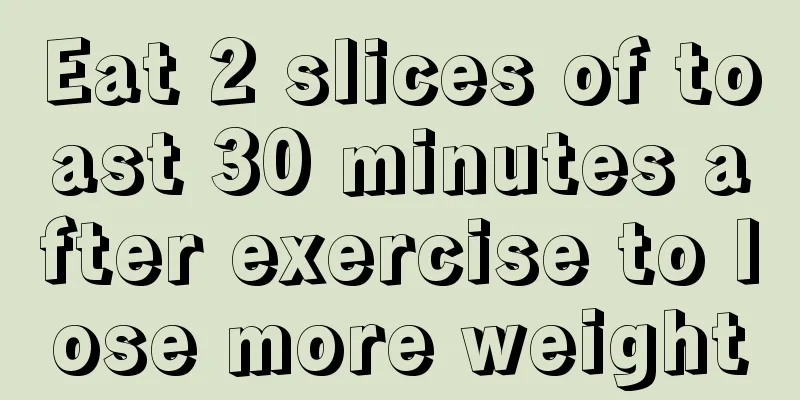How to do a barbell squat

|
Physical exercise can greatly improve our bodies. Squats are the simplest method of exercise. They can also be done indoors. They do not require too much space and will not affect other people. Barbell squats are the most common exercise, but we must master the method to achieve better results. Let’s learn how to practice barbell squats. How to do a barbell squat 1. Supported squat: The barbell is located above and behind, with both arms straight, supporting the barbell with a wider grip, and then practice squats. When supporting, tighten the deltoid and trapezius muscles as much as possible to stabilize the scapula and upper arm; rotate the forearm inward so that the olecranon of the elbow enters the olecranon fossa; tighten the triceps to stabilize the elbow joint and complete the "shoulder lock" action. At the same time, the wrists, elbows, shoulders, upper body and barbell should be in the same plane, and the head should be slightly forward to help balance and firmly support the barbell. Supported squats are somewhat difficult and have relatively low stability. They require the practitioner's ankles, hips, shoulders and other joints to have good flexibility, otherwise it is difficult to complete the movement correctly. Even if they can perform actions, the performance is rather forced. Furthermore, since the upper limbs are weaker than the lower limbs, the weight used generally does not meet the requirements for training the lower limb muscles. If the weight is too heavy, you need to place it on a squat rack or have someone else help you lift it. In addition, during the support process, the upper limbs, shoulders and other parts use more force and consume more energy, and the barbell's stimulation of the lower limb muscles is not concentrated, affecting the effect. Therefore, supported squats are generally less used in bodybuilding training. The advantages of supported squats are: It can effectively develop the flexibility and strength of related joints and increase the stability of joints such as shoulders and elbows. It can effectively develop the strength of muscles throughout the body, exercise more parts, and is beneficial to the balanced and coordinated development of the body. Cultivate and improve the ability to coordinate the use of force between the upper and lower limbs. 2. Front squat: The barbell is in front of the neck. The correct position of the horizontal bar is on the clavicle and the deltoid muscles of both shoulders so that the weight of the barbell is shared by three points. Lift both elbows, with the elbow joints located in front of the vertical plane of the horizontal bar, and the upper arms as close to horizontal as possible, so that the anterior deltoid muscle can support more weight (in fact, the deltoid muscle can bear more than 70% of the weight). At the same time, you should tighten your back muscles, straighten your upper body, raise your head, and slightly retract your lower jaw, so that the total center of gravity approaches or passes through the center of the support surface to ensure the stability of the movement. The front squat requires precise placement of the bar: If the flexibility of the wrist, elbow and shoulder joints is poor, it is not easy to complete the movement of raising both elbows to a level level. Often the elbow joints and the horizontal bar are in the same vertical plane, and the barbell is placed lower, falling directly on the clavicle or even on the chest. This kind of support will not be too heavy, will not last long, and will not cause tenderness in the clavicle or chest. If the barbell is placed too far forward, the lever arm will be increased, making it more difficult to support the torso and fix the barbell with both arms. If the barbell is placed too far inward, the horizontal bar will compress the trachea and carotid artery, causing difficulty in breathing or insufficient blood supply to the head, which can easily lead to fainting. It is not difficult to see that the front squat requires higher flexibility of the joints. In addition to the ankle, hip and shoulder joints, the flexibility and strength of the wrist and elbow joints must also be very strong. Because of this, many amateur bodybuilding enthusiasts can hardly complete the front squat. Others feel that the pressure on the chest caused by placing the barbell in front of the neck is inevitable, depressing, and unbearable, so they give up practicing this movement. The advantage of the front squat is that it can train the quadriceps more effectively and focusedly, while improving the function of related parts of the body. Therefore, practitioners should overcome difficulties to complete this exercise. Although barbell squats can make our bodies healthier, we must master the method. The above is an introduction to how to practice barbell squats. After understanding it, we know how to practice barbell squats to be more effective. In addition, if you want to improve your body through exercise, you must persist in exercising to achieve better results. |
<<: What are the benefits of weighted squats?
>>: What are the benefits of weighted squats?
Recommend
How to do aerobic interval exercise?
Nowadays, exercise has occupied a very important ...
Is it good to run on an empty stomach in the morning?
Many people are used to doing morning exercises, ...
Can step aerobics help you lose weight?
Step aerobics. I believe that friends who like ae...
What are the aerobic exercises for yoga weight loss?
Yoga weight loss is not a very good way to lose w...
When fitness is also a "zero deposit and lump sum withdrawal", the gains will definitely be great
When it comes to fitness, many people immediately...
Can running in the morning help you lose weight?
Some people want to enjoy physical exercise by ru...
How effective is the abdominal wheel in training muscles?
There are many ways to exercise muscles throughou...
What is the most effective way to exercise arm muscles?
In order to make the arm muscles stronger and mor...
Causes of knee injuries from running
We all know that every organ and tissue in the bo...
How to run without hurting your knees
Before running, you must do some warm-up exercise...
How to consume excess lactic acid in the body
How to consume excess lactic acid in the body? A ...
How to lose weight quickly without rebounding?
In real life, losing weight is an issue that many...
Can doing push-ups regularly help build arm strength?
Men all want to have sexy and strong pectoral mus...
Will running and skipping rope be more effective in losing weight?
With the improvement of living standards, people&...
Benefits of Yoga for Weight Loss Before Sleeping
I think everyone has heard of yoga, but not many ...









